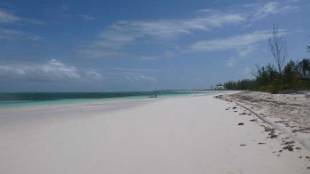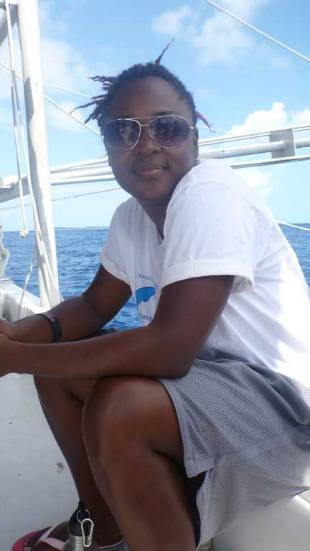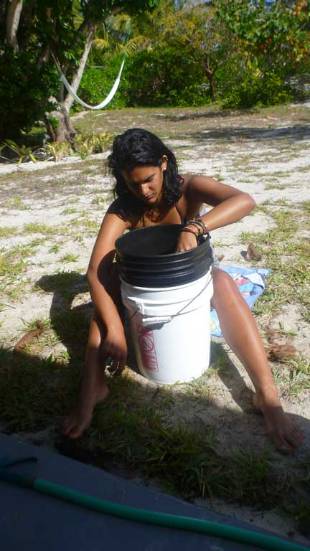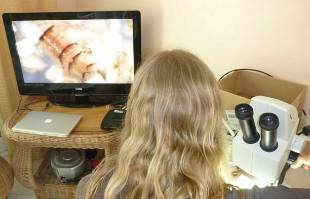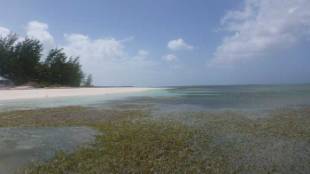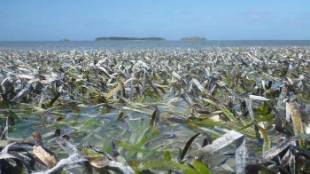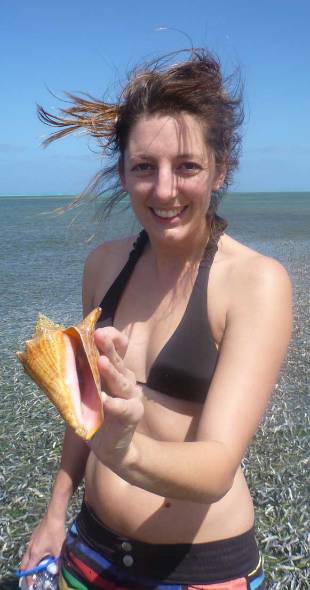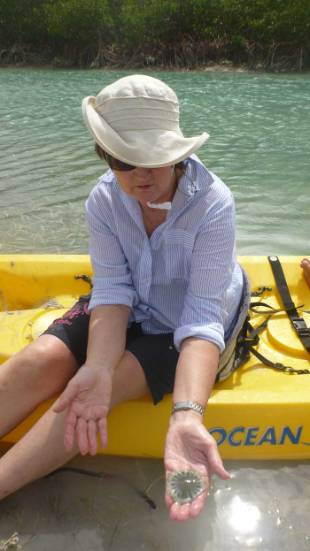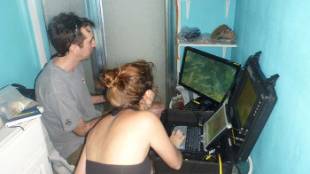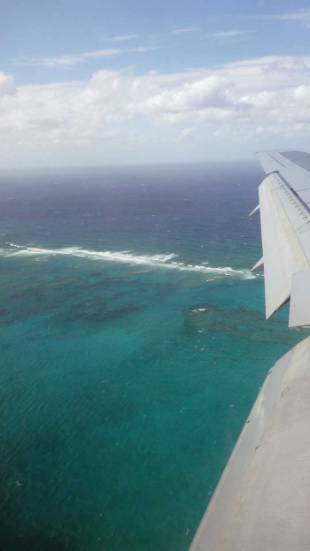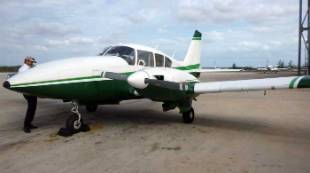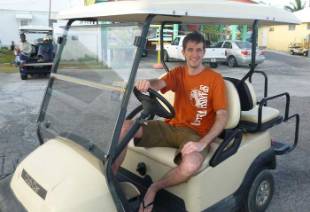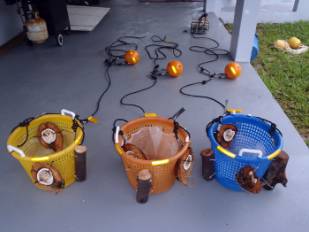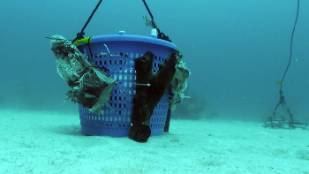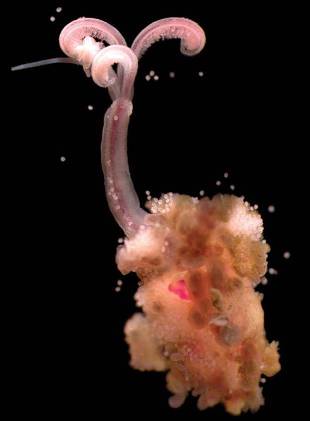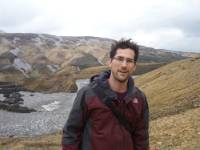As you’re reading this I’m flying across the Atlantic home, to what I hear is a sunny London! I’ve had an amazing experience following the scientists as they look for new species and experiment with REX in the waters around the Bahamas.
The scientists will have a lot of work to do when they get back to the Museum with all their samples. They will be busy checking to see if the species they have found here in the Bahamas are actually undescribed and new to science and we'll keep you updated with any results.
I hope you’ve enjoyed following the blog as much as I have enjoyed writing it. Highlights for me have been seeing the amazing footage that REX was sending back to the control room, helping the scientists sieve for worms in the mangroves, sharing in their ups and downs as they looked for the experiments and, of course, waking up with an amazing view every morning!
Above: Our office for the last 10 days – not bad
(Click images to see them full size)
Now it’s time for the credits… there are lots of people to thank for making this happen!
Firstly to Stephen, Martin and Honor for allowing me to spend 10 days out of the office. To everyone in the Learning department for their support but especially my fantastic colleagues in the Nature Live team – Jo, Ana Rita, Natalie and Tom.
Extra special thanks to Tom and Natalie for hosting the shows so professionally and dealing with any technical problems so gracefully – I bet the audience had no idea what was happening behind the scenes! Also to Verity Nye, who came up from Southampton, and Museum scientist Geoff Boxshall who were our anchors in the studio during the live-links. Geoff, great news, we collected you a sample from Hatchet Bay and I have a big bruise on my leg to prove it!
Thanks to Adam and the special effects team for making sure the live-video-links back to London worked so smoothly.
To Jonathan for setting up the fantastic live-chat sessions and to Grace for organising the entire schools component of the fieldtrip. It was so great having that interaction with pupils.
In the Bahamas we have a lot of people to thank – firstly Janet and Harvey Higgs and the rest of Nick’s family for being so hospitable – no request was ever too much, and we requested a lot!
Big thank you to our fantastic skipper Howard, not only was he a great Captain, he’s also a great cook too – preparing freshly caught fish while we were busy with REX...
Above: Howard making lunch as everyone looks on
Thank you to Kendra from the Bahamas Marine Mammals Research Organisation who supplied the whale bones that we sank for our experiments. I bet the sharks are grateful for that too!
Above: Kendra joined us to see what we had done with her donated whale bones!
The science team have been amazing and so accommodating to my requests; whether that was asking to interview them, taking part in Nature Live and other events or my personal favourite, ‘how do you spell that again’?!
Big thanks to Diva, Leigh, Nick, Helena and Gill for being great field companions. Thanks to Tony for always being at the ready with the camera and making those live-video-links happen from this end.
Finally, a big thank you to Adrian for making this whole fieldtrip possible! I’ve had a fantastic time following science as it happens in the field – capturing their discoveries and sharing them with you - and I hope you’ve enjoyed reading about it!
I asked Adrian to sum up the trip for us…
Keep in touch with the Field work with Nature Live community and subscribe to the RSS feed for this blog and you’ll receive updates whenever a new post appears.
And remember, you can meet more Museum scientists every day at Nature Live events held in the Museum’s Attenborough studio at 14:30 (and also at 12:30 at weekends and holidays).
I hope to see you at a Nature Live event soon!
Above: Team Bahamas (except Tony, who was taking the photo!)



